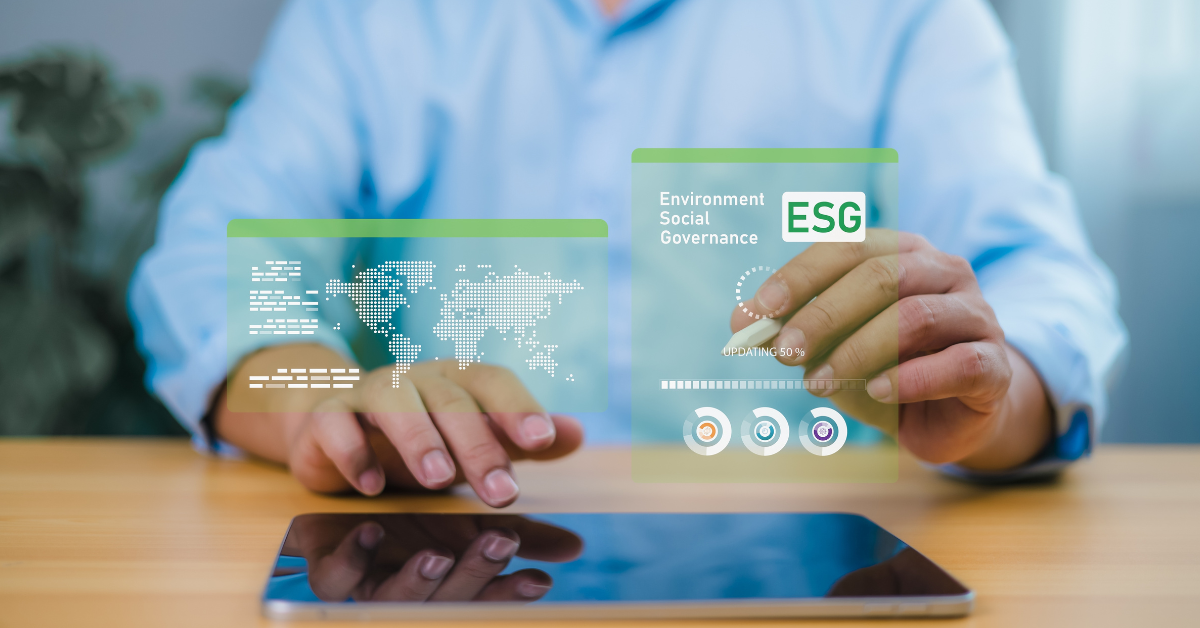
Discover how sustainability enhances talent acquisition by boosting employer appeal, deepening skill pipelines, and driving engagement.
The global hiring landscape is changing just as the race to cut carbon emissions accelerates.
Demand for “green-skilled” professionals rose 11.6 percent worldwide last year, according to LinkedIn, outpacing the 5.6 percent growth in available green talent.
This market pressure, combined with skills scarcity and rising employee expectations, means that any modern talent acquisition strategy (TAS) must integrate environmental, social & governance (ESG) commitments from the outset.
What is a talent acquisition strategy?
A talent acquisition strategy is the long-range, data-driven blueprint an organisation uses to secure the workforce capabilities it will need over a multi-year horizon.
Whereas tactical recruiting fills requisitions, a TAS aligns workforce demand forecasting, brand positioning, sourcing architecture, and selection science with the enterprise’s strategic objectives and risk appetite.
Core components typically include:
- Workforce planning: scenario modelling of future skill demand, vacancy risk and automation displacement.
- Employer value proposition (EVP): the differentiated promise (culture, career path, rewards, purpose) communicated to target talent segments.
- Channel mix: proportional use of internal mobility, direct sourcing, agency, referrals, contingent labour and talent marketplaces.
- Assessment & selection: job-relevant, validated tools (AI-augmented screening, structured interviews, psychometrics) that minimise bias.
- Analytics & governance: KPIs such as time-to-accept, quality-of-hire and cost-per-start, monitored under clear data-privacy and DEI standards.
Embedding ESG into each pillar elevates the TAS from a hiring engine to a reputational and risk-management asset.
How to develop a talent acquisition strategy
Building an effective talent acquisition strategy for the sustainability era requires a structured, purpose-led approach.
Quantify strategic workforce gaps
Combine corporate growth plans, attrition curves, and net-zero transition scenarios.
OECD 2024 modelling shows that more than 25 percent of existing jobs will be “strongly affected” by net-zero policies, positively or negatively.
Integrating these projections prevents blind spots when carbon-intensive roles decline and low-carbon ones surge.
Define a purpose-led EVP
Use employee listening and external sentiment analysis to isolate the values that attract critical talent pools to codify those commitments (net-zero targets, circular-economy initiatives, social-impact volunteering) into brand narratives and job-marketing collateral.
This approach can add significant value to companies as stated in a 2009 article by Harvard Business Review where it's reported that firms with robust sustainability programs are 25 percent more likely to attract top talent.
Architect sustainable sourcing pipelines
Developing sustainable sourcing pipelines means investing in long-term talent supply and internal mobility.
This includes creating green-skills academies and forming partnerships with universities or industry bodies to build future capability.
It also involves developing talent communities that share ESG-related content and micro-learning opportunities rather than simply advertising vacancies.
Additionally, using AI-driven skills taxonomies helps organisations identify and redeploy internal talent whose existing roles may be phased out due to decarbonisation efforts.
Optimise candidate experience through eco-efficient processes
Digital screening, video interviews, and virtual assessment centres cut travel emissions while accelerating throughput.
By optimizing the screening process and interview stages, companies can achieve cycle-time reductions, diversity gains, and smoother processes after thanks to a paper-free hiring workflow.
Establish metrics with ESG context
In today’s data-driven world, every action and strategy need to be tied to data.
In this context, tracking “sustainable-hire ratio” (hires into roles that explicitly support the sustainability agenda), carbon saved per hire (from virtual processes), and retention uplift linked to EVP-ESG campaigns can enhance the company’s awareness on its processes and bring value to brands and organizations.
The Benefits of Sustainability for Talent Acquisition
Embedding sustainability into talent strategy delivers multiple advantages across the employee lifecycle.
Employer Attractiveness
Companies demonstrating strong sustainability credentials are becoming significantly more attractive to job seekers.
According to Deloitte’s 2024 Global Gen Z and Millennial Survey, approximately 70% of young professionals now factor environmental responsibility prominently into their decision-making when evaluating potential employers.
Moreover, nearly one-fifth have already changed roles or rejected job offers based on environmental concerns.
Complementing this, Arbor’s recent research shows that 67% of employees would prefer to apply or commit to roles within organizations they perceive as environmentally responsible, even expressing willingness to trade higher salaries for work that aligns with their values.
Depth of Scarce-Skill Pipelines
According to LinkedIn’s Global Green Skill Report 2024, professionals who list green competencies on their profiles are hired 54.6 % faster than the global average; demand for such skills is rising twice as quickly as supply.
Companies positioned as climate-solution leaders, therefore, tap into a disproportionately rich talent pool of engineers, data scientists and supply-chain experts.
Engagement & Productivity
Sustainability is not merely an employer-branding asset, it is a powerful lever for driving deeper employee engagement and measurable business performance.
Employees who see their company's sustainability agenda as credible and aligned with their own values tend to invest greater discretionary effort, collaborate more effectively, and innovate more readily to solve complex challenges.
Furthermore, firms that authentically embed sustainability into their operations and employee experience often see stronger internal communication, a more inclusive culture, and higher overall employee wellbeing, all of which are linked to improved operational outcomes and long-term competitive advantage[GG1] .
Future-Proofing Against Market Shifts
OECD modelling indicates that more than one-quarter of current jobs will be strongly affected, positively or negatively, by net-zero policies by 2030.
In this context, firms that integrate green up-skilling and internal redeployment into their talent plans can redeploy people faster than rivals, avoiding redundancy costs and safeguarding institutional memory.
The Future of Talent Acquisition and the Role of Sustainability
Over the next five years, talent acquisition will be reshaped by the fusion of predictive workforce analytics and mandatory sustainability disclosures.
New regulations, such as the EU Corporate Sustainability Reporting Directive (CSRD) revised by the Omnibus simplification Package and the U.S. SEC’s climate-risk rules, are pushing HR and sustainability teams to share verifiable data pipelines.
Recruiters will map vacancies to science-based taxonomies (e.g. the EU Green Jobs Classification) and tag each requisition with its carbon-reduction or social-impact contribution, enabling candidates to filter roles by purpose as easily as by salary band.
Artificial-intelligence sourcing engines will rank prospects not only on skills adjacency but also on “sustainability alignment scores” derived from project footprints and open-source publications.
Meanwhile, scope-3 supply-chain scrutiny will extend to contingent labour, forcing employers to audit staffing vendors’ ESG performance as part of preferred-supplier agreements.
In this landscape, successful talent acquisition functions will operate as cross-functional data hubs, integrating climate scenarios, DEI targets, and skills forecasts to orchestrate dynamic talent ecosystems capable of powering accelerated, low-carbon growth.



